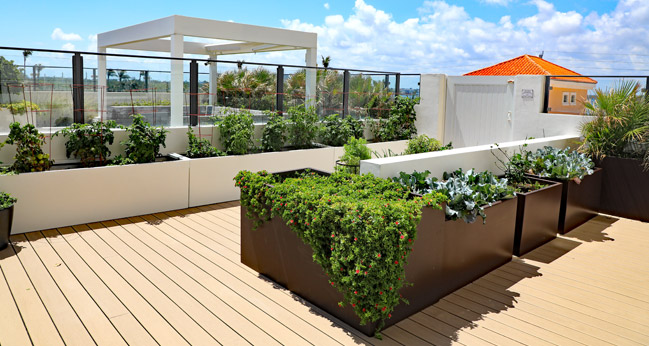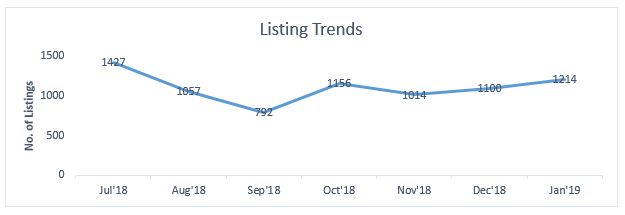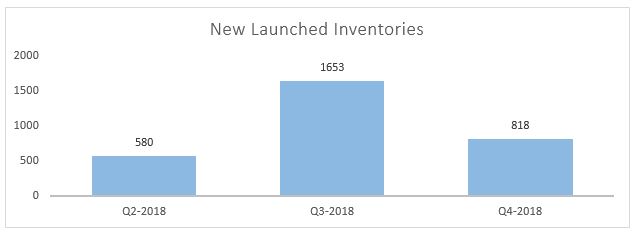Chennai the Capital city of Tamil Nadu also known as the “Detroit of India” since over one-third of the country’s automobile industry operating from here.
Chennai is among the safest city in India, and is exemplified by the fact that it has the third-largest expatriate population in the country.
Being an epicentre of various Religious, Social, Economical & Educational centres, it’s also Among the Fastest growing Real Estate business option in Southern India. Providing good returns to the Investors & a safe & secure option to the end users.
Chennai has grown significantly in the last few years. Education prospects and employment opportunities, along with a decent lifestyle, are the key drivers that attract people to the city. With increasing population, the city’s real estate landscape has also grown and is now spread across various zones.
The market is largely end-user driven and as a result, there is minimal speculation. Whilst this results in a slow and steady growth, the fundamentals remain intact and the future growth potential of the city is undisturbed.
Top Localities
The IT/ITeS and Automobile sectors are the major contributors for the Economy of the City. As the Southern and Western suburbs are transforming into employment-generation clusters hosting various IT and financial services, it has been witnessed that maximum Residential Developments have been launched here.
Ambattur and Oragadam in West Chennai, and Old Mahabalipuram Road (OMR), Gudavanchery and Pallikaranai in South Chennai are amongst the top localities for residential property developments and investment.
1. Ambattur
Tagged as Chennai’s most popular suburb with two lakes, namely Thangal and Ambattur Lake, the locality is rapidly developing into a fine residential hub. Famous for its storm-water drain network, Thangal Pond Park and TI Diamond Chain, Ambattur also has an assortment of well-known educational institutions, banks, restaurants, malls and religious places.
Earlier, Ambattur was popularly called an auto ancillary hub. However, with the emergence of many IT companies, in addition to small-scale production units, the economy of the area is now predominantly industrial. The famous Ambattur Industrial Estate is the largest small-scale industrial estate in South Asia. Additionally, popular companies like Britannia, TVS, and Dunlop have their plants in the region.
VSNL-Tata Communication’s satellite earth station is also located here, at the Ambattur-Red Hills road. Popular local channels such as Jaya TV, Vijay TV and the like, broadcast signals from this station. Another important establishment, just 5 km from Ambattur, is Heavy Vehicles Factory (HVF), which produces military tanks.
The locality is well equipped with great social infrastructure. It hosts reputed educational institutions like TI Matriculation Higher Secondary School, Sir Ramaswami Mudaliar Higher Secondary School, St. Peter’s Engineering College, NIIT and Velammal Engineering College. Noteworthy hospitals in Ambattur include Sir Ivan Stedeford Hospital, Essvee Hospital, and Teja Hospital.
The commercial infrastructure in the area complements its developed social infrastructure, with malls like Yes Yes Arcade and J. M. Shopping Centre, situated within 2 km from the locality, and popular dining places such as Pizza Park, Kattikarumbu Vegetarian Hotel, Madurai Appu, Five Star Chicken, and Saranya spread out in the region.
Ambattur is home to several places of worship, such as Sri Rama Anchanayar Temple, Murugan Temple, St. Joseph’s Church, St Andrew’s Church, Ambattur Church, Noor Sanath Al-Jama Masjid, and Tamil Nadu Thowheed Jamath.
Connectivity and Transit Points
Ambattur has excellent connectivity in terms of roads and public transportation.
Karukku Main Road, Pudur Main Road, Surappattu Road, Kallikuppam Road, Chennai-Tiruttani Highway, Chennai Bypass Road, and Tonakela Camp Road connect Ambattur to the rest of Chennai.
The main bus stops in the area include Ekambara Iyer Street, Oragadam, Prithvipakkam Down, LIC Zonal Center, Pudur, and Kallikuppam Arch bus stops, falling within a 5-km radius of Ambattur.
Ambattur Railway Station, Pattaravakkam Railway Station and Thirumullaivoil Railway lie within 4 km from the area, helping commuters travel quickly.
The locality also enjoys proximity to Chennai International Airport, which lies at a distance of around 23 km, and can be reached within an hour via Jawaharlal Nehru Road.
Residential Market Trends
Apartments and houses dominate the properties in this region. Ambattur is tagged as a well-developed locality because most of the projects here, are completed and ready for occupancy. The average super built-up area price here is Rs. 7289.5 per Sq. Ft. & the Locality has witnessed an appreciation from Rs. 7252.5 per Sq. Ft. to Rs. 7289.5 per Sq. Ft. 2nd Quarter of 2018 as compared to the 1st Quarter of 2018.

2. Oragadam
Oragadam is an industrial suburb located on the outskirts of Chennai. Nestled between Grant Southern Trunk Road (GST) and NH-4, the region boasts of being the biggest automobile hub in South Asia. It also enjoys proximity to the industrial hub of Sri Perumbudur, which is just 15 minutes’ drive away via Sriperumbadur – Thiruvallur – Redhills Road.
Until a few years ago, the place was relatively unknown, but since it is slowly turning into a multi-faceted industrial zone, Oragadam has undergone rapid growth in recent years. Today, some of the world’s leading companies such as Renault, Nissan, Moserbaer, Apollo Tyres, TVS Group of Companies, Ashok Leyland, Vehicle Testing Centre, and Senmina have their base in Oragadam.
Oragadam also scores positive on liveability front. There are several educational institutions, and banks such as State Bank of India, Bank of Baroda, Federal Bank, and Cooperation Bank of India. Apart from vital facilities, the area has numerous religious places like Dhuraimurugar Siva Marabu Sithaananda Dhiyana Sabai, Pillar of Fire of Jesus Prayer House, and Vallakottai Murugan Temple. Buoyed by these factors, various residential projects have come up in the area.
Further, the social infrastructure, hospitals, educational institutions, and residential buildings are expected to grow at a fast pace, making it one of the important areas in Chennai.
Connectivity and Transit Points
Being strategically placed between NH-45 and NH-4, Oragadam is well-connected to Chennai International Airport, Chennai port, and Chennai Central railway station.
Buses are a major mode of transportation. With the availability of Chennai Metro buses, transportation to the city just becomes easier.
The nearby railway station is Potheri Railway Station, which is around 40 km away. Autos can be frequently found for local transportation.
Residential Market Trends
Once touted as an industrial area, Oragadam has slowly become a residential area too, with several residential projects encircling the region. Oragadam’s residential market trends have seen ups and downs in the past. According to the Apr-Jun quarter of 2018, Oragadam property rates have gone up to Rs. 5546.5 per sq. ft. The region is still under development and holds a great potential for a greater residential expansion. As per the property type, over 70 per cent are plots and around 20 per cent are apartments. Various builders like Hiranandani, Arun Excello, Tata Housing, and Park City have constructed their residential projects in Oragadam.

3. Old Mahabalipuram Road (OMR)
The 50km stretch that extends from Madhya Kailash temple situated in Adyar right up to the south of Mamallapuram in Kanchipuram district is known as Old Mahabalipuram Road (OMR) or State Highway 49 A (SH-49A). The road strategically merges with East Coast Road (ECR) and yields the most convenient method of commuting between the southern peripheral localities in Chennai such as Thiruvanmiyur, Palavakkam, and Neelankarai.
The development of this road led to the emergence of IT/ITeS companies such as Satyam Computer Services, HCL Technologies, Accenture India, and Infosys in the area, giving OMR the IT Corridor title. The road harbours multiple micro markets such as Taramani, Perungudi, Thoraipakkam, Karapakkam, and Sholinganallur, generating a prominent real estate market with escalating demand for commercial and residential properties.
The locality consists of resourceful social infrastructure developments. Noteworthy educational institutions situated along this stretch include Sishya OMR School, American International School, Abacus Montessori School, MNM Jain Engineering College, Dhanraj Baid Jain College, and St. Joseph’s College of Engineering. Multi-specialty hospitals present along this highway include Apollo Hospital, Aditya Bone and Joint Clinic, Lifeline, and Global Hospital. There are also a plethora of entertainment centres, restaurants, and supermarkets to meet the varied needs of the residents.
The region comprises nine important stretches, namely Madhya Kailash, Taramani, Perungudi, Thoraipakkam, Sholinganallur, Navalur, Padur, Kelambakkam, and Thaiyur.
Connectivity and Transit Points
OMR, also known as ‘Rajiv Gandhi IT Expressway’, plays a pivotal role in linking the multiple localities situated by the banks of this stretch.
It also offers excellent road connectivity to destinations such as Mamallapuram, situated outside the city limits. Subdivided into segments, the road has tracts of development pending that will further improve this road network. This road also facilitates travel from Thoraipakkam to Pallavaram via Thoraipakkam-Pallavaram Radial Road. Vandalur and Kelambakkam can be reached from here via Vandalur-Kelambakkam Road.
Other link roads of this stretch include Maraimalai Adigal Bridge-Irumbuliyur Road and Medavakkam-Karapakkam Road.
Guindy Railway Station, situated 14km from here, facilitates local rail travel to various parts of the city. Chennai’s main railway station, Chennai Central Railway Station, is situated 20km from OMR, and can be reached via Rajiv Gandhi IT Expressway.
Chennai International Airport, located on GST Road is at a distance of 14km from OMR, which takes around half an hour to reach via Inner Ring Road.
More common methods of transportation such as autos and buses are easily available on this stretch. Autos come in handy for short-distance travel, and several bus stops are located in all the critical areas such as outside IT parks and colleges to travel to other important areas of Chennai.
Residential Market Trends
The housing market of OMR is littered with residential projects. In fact, many instances have indicated a demand over supply condition, which has ultimately given rise to an increment in property prices.
Maximum demand here is for multi-storey apartments, more specifically 2 BHK residences. The current average super built-up area price is Rs. 6,350 per sq. ft., which has decreased by Rs. 180 per sq. ft. when compared to the first quarter (Jan-Mar) of 2018.

4. Guduvanchery
Guduvancheri, also referred to as Kooduvancheri, is a promising suburb, situated in the south-western part of Chennai. The locality falls along the bustling NH-45 that connects Chennai to many other cities of Tamil Nadu. It is sandwiched between Tambaram and Chengalpattu, and falls on the Grand South Trunk Road (GST Road).
Surrounded by a number of water bodies, Guduvancheri has come a long way from being just another locality in the outskirts of Chennai to one with great potential. With a myriad of lakes and parks like Nandivaram Lake, Thaangal Eari Lake, Rajiv Gandhi Nagar Lake, Thiruvalluvar Park, and Potheri Park, Guduvancheri contrasts with the otherwise crowded and buzzing localities of Chennai with a calm and serene atmosphere.
Guduvancheri is surrounded by areas like Urapakkam, Maraimalai Nagar, Potheri, Adhanur, and many other developing suburbs of Chennai. The locality also shares proximity to a multitude of IT Parks like Accenture, Ford, and Mahindra World City.
Guduvancheri has well-developed social infrastructure, with a functional police station, a good number of street lights, and the presence of a fire station in the area. A number of educational institutions like Bharathiyar Matriculation Higher Secondary School, Saint Mary’s Matriculation School, Guduvancheri Boys Higher Secondary School, and SIP-Guduvancheri dart in this area. Apart from these, a host of SRM Institutions like SRM School of Hotel Management and SRM School of Management fall within a 3 km radius of Guduvancheri.
The area is also home to a number of healthcare centres such as Christudas Hospital, Sri Venkateswara Clinic, Vasantham Clinic, K. R. Nursing Home, and Sumana Goodwill Home. Commercial establishments such as restaurants, grocery stores, supermarkets, and other shops offering basic amenities dot the area in reasonable numbers. Some of the popular restaurants in the area are Blueberry – The Cake Cafe, Adyar Anandha Bhavan, and Cafe Coffee Day.
Connectivity and Transit Points
Given its proximity to GST Road, which works as a threshold to Chennai from other south Indian cities, Guduvancheri is well connected with not just the important localities of Chennai, but also a number of other south Indian cities.
Roads like Nellikuppam Road, Lake View Road, and Station Road make sure that the locality has smooth connectivity.
Public transportation in Guduvancheri is just as good as its roads and streets. A number of buses ply through the locality, making stops at Srinivasa Puram Bus Stop and Guduvancheri Bus Terminus. One can find buses to various destinations within Chennai like T. Nagar, Tambaram, Chengelpet, High Court, Koyambedu, Hasthinapuram, Ambattur, and Vadapalani from here.
Guduvancheri Railway Station of Chennai Suburban Railway Network facilitates quick inter-city rail transportation. By boarding the trains at this station, one can reach Chennai Beach, Nungambakkam, Egmore, Kodambakkam, St. Thomas Mount, Meenambakkam, and many other places.
Air transport is facilitated by Chennai International Airport, which can be reached via NH-45 in less than an hour. Since the airport is close to Meenambakkam, an affordable option would be to board a train from Guduvancheri to Meenambakkam, and catch an auto from the Meenambakkam station to the airport.
Residential Market Trends
Guduvancheri boasts of abundant land availability, especially in terms of residential plots and lands. Because it is in the wake of development, the dominant property type in the area is residential plots, followed by apartments.
The residential plot prices are extremely reasonable in the area. The average super built-up area price for apartments here is Rs. 6148 per Sq. Ft.

5. Pallikaranai
One of the fastest growing residential areas in India, Pallikaranai is a hot favourite destination for investors. Located in South Chennai, the locality is in close proximity to the OMR (Old Mahabalipuram Road), which is one of Chennai’s biggest IT/ITeS corridors. On the other side, there is the GST Road (Grand Southern Trunk Road), which is yet another major IT/ITeS Corridor in South Chennai. Simply put, the area has a lot going for it in terms of demand for residential space. And to top it all, it is also close to the Chennai International Airport, located only 12 km away.
The southern half of Pallikaranai is where the residential market is booming. One of the biggest wetlands in South India, the Pallikaranai Marshlands, occupies the northern half. Although this makes half of Pallikaranai useless to builders and real estate investors, the residents and visitors can appreciate one of the last natural wetlands South India has to offer. It is one of the last surviving wetland ecosystems in Chennai, and birds from around India and other countries migrate here during different seasons.
Connectivity and Transit Points
The major road that runs through Pallikaranai is the Velachery Main Road, which leads to Velachery to the North. Buses on this road can be caught to go through Velachery, onwards to the many key locations in Chennai, like St. Thomas Mount, Koyambedu, Besant Nagar, T Nagar, Nungambakkam, Egmore, Central, and Marina Beach – commuters may need to change buses once along the way, rarely twice. The primary bus stops to catch buses at are the Pallikaranai Bus Stop, Narayanapuram Bus Stop, and Balaji Dental College Bus Stop.
The nearest railway station is the Velachery MRTS Station, which can be reached by catching a bus on the Velachery Main Road and getting off at the Velachery Station Bus Stop. The railway station is part of the MRTS (Mass Rapid Transit System), and trains from here go to OMR, ECR, Besant Nagar, and Marina Beach.
Another major road that runs through Pallikaranai is the Pallavaram-Thoraipakkam Radial Road or 200 Feet Road. It runs from GST Road (Grand Southern Trunk Road) to OMR (Old Mahabalipuram Road), intersecting the Velachery Main Road in Pallikaranai. This road can be used to travel to the IT/ITeS corridors in South Chennai and the airport. There is a bus stop at the intersection, Kamakshi Hospital Bus Stop, which can take commuters to their destinations.
Residential Market Trends
Given the rapid growth this locality witnessed over the past decade, most of the residential buildings are already built and ready-to-move. Among these, the most common buildings are multi-storey apartments, while there are a substantial number of individual houses. Land plots are also available for purchase, as well as builder floor apartments. Villas are very few in numbers.
The sales rates for apartments in Pallikaranai sits around Rs. 4,630 per sq. ft. to Rs. 6,564 per sq. ft., and has been steadily increasing over the past couple of years to get here a good sign for future growth.
The average super built-up are price here for apartment is Rs. 7912 Sq. Ft.

*Ave. SBA Price represents Average Super Built-up Area Price i.e. Rs. Per Sq. Ft.
Some of the Newly Launched Projects in Chennai are:
Casagrand Woodside, TVS Emerald Lighthouse, Ananda Bhavani Nagar, I Dream Mandhra, KSR Rishap Nagar










